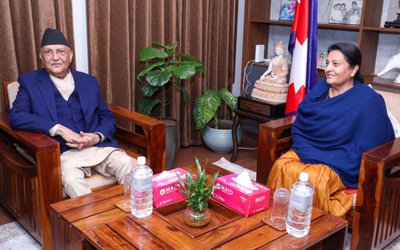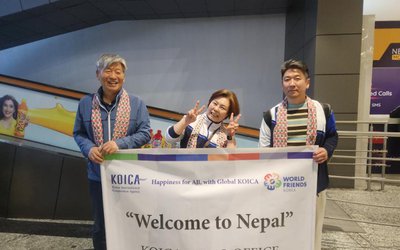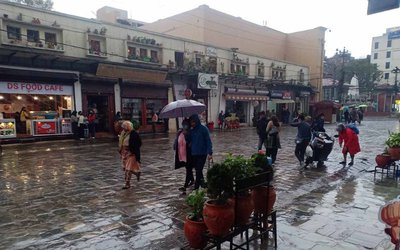
The desire to understand the existence and ourselves might have first initiated the process of education, which then diverged into various categories targeting different aspects of life. The Physical Sciences addressed the material aspects of life and universe whereas the Social Sciences targeted the spiritual aspects of humanity. The conflict between human desires and limited resources forced the start of the economic aspects of life and therefore the commencement of commerce education. Today, we can find these fields merging to create a distinct social body known as education.
As the world starts to dig deep into the essence of this categorization; subjects were arbitrarily ranked higher in importance, forgetting our aesthetic needs. Studying soon became more of an effort to receive social acceptance than to learn. The real essence of education got lost in the act of competing and categorizing humans on the basis of their intellectual competencies and degrees.
Nepal did not remain untouched by this misguided approach to teaching and learning. We started producing scholars who scored soaring marks in exams but were hardly capable of effecting any real change in our country. We started admiring people for their formal credentials leaving the efforts towards the welfare of their communities alone. Students competed for grades and remained intellectually unchallenged.
After a series of political, educational and economic setbacks, a handful of suicides, and a plethora of dropouts, we are starting to wonder - are we doing the things right? A number of parents have started to let their children follow their dreams. Some colleges and schools have started to adopt practical and hands-on teaching methods, and some societies have stopped judging children based on their grades.
Directing this wave of progressive teaching and learning, Karkhana emerged and found its footing as an education company three years ago. Karkhana’s evolution was guided by the need to reimagine how teaching and learning was approached by mainstream education in Nepal. Initially run by a collective of technologists, Karkhana’s vision was to prepare the Nepali ecosystem for innovation. Their paths as technologists and makers crossed with education after they observed serious gaps in pedagogical orientation that was hindering the processes of creativity, collaboration, critical thinking and communication- and ultimately innovation. This vision materialized through the Karkhana Innovators’ Club (KIC), an afterschool program that immersed middle school students in long drawn project-based learning. However, the need to extend hands-on learning to a wider network of middle school students prompted the maturation of a co-curricular program known as BeeCreative (BC).
BeeCreative’s 2014 pilot program at Triyog school was well received by the school and especially by the middle school students it catered to. Each class was run by a BeeCreative teacher who would go to the school every week with materials and a lesson plan that encouraged students to grasp a concept in their school curriculum through a hands-on approach. After the pilot took off, BC extended its service across Kathmandu. The BeeCreative program offers hands-on classes that primarily cover content from the disciplines of Science, Technology, Engineering, Arts and Mathematics- collectively known as the STEAM subjects.
BC classes introduce students to different materials to build and understand simple concepts like how things move or how colors work. The teachers use as few instructions as possible and let students’ imagination run free. Students grapple with concepts deemed difficult such as Newton’s Law of Motion by making cars powered by balloons or explore how circuits might be used in crafts where they learn how to design a scientific experimentation tool, create soft circuits that don’t use wires, and even design circuits they can wear. Different clusters are available, which are a group of 6-8 classes that the schools can choose. For instance, the Storytelling series includes activities that encourage students to create or adapt stories and tell them. Presentation techniques such as paper slides, storyboarding, and public speaking are also taught to help them communicate their stories. Next, the Structure and Stability series include structural design activities. These activities challenge students to create complex structures using very basic materials while keeping firmness or balance or stability of structure. Math-a-magic connects day-to-day objects and activities with their mathematics classes. It explores a wide range of concepts like mathematical patterns found in nature to magical ways to do calculations faster. Thus, BeeCreative creates classes that are interactive, practical but still curricular.
Karkhana therefore matured from a makerspace run by a team of just seven members to an education company now held together by more than thirty members. The company caters to a lot of students through its BeeCreative program in over 22 different schools around the Valley. Working closely with both the teachers and students, Karkhana has now found itself spreading the public imagination about learning that is based on the 4Cs: critical thinking, collaboration, communication and creativity. .
BeeCreative has been trying to make a difference in educational space of our country. With a hands-on approach, it is making the traditional form of education much more interesting and more fun to learn. To produce a generation of thinkers, innovators and creators, BeeCreative will definitely be seen playing a big part in schools. Let us all hold back and watch as education is revolutionized!
Article by: Akankshya Shrestha (akankshya@karkhana.asia), and Sabrina Adhikari (sabrina@karkhana.asia)

Children learning at Karkhana


















